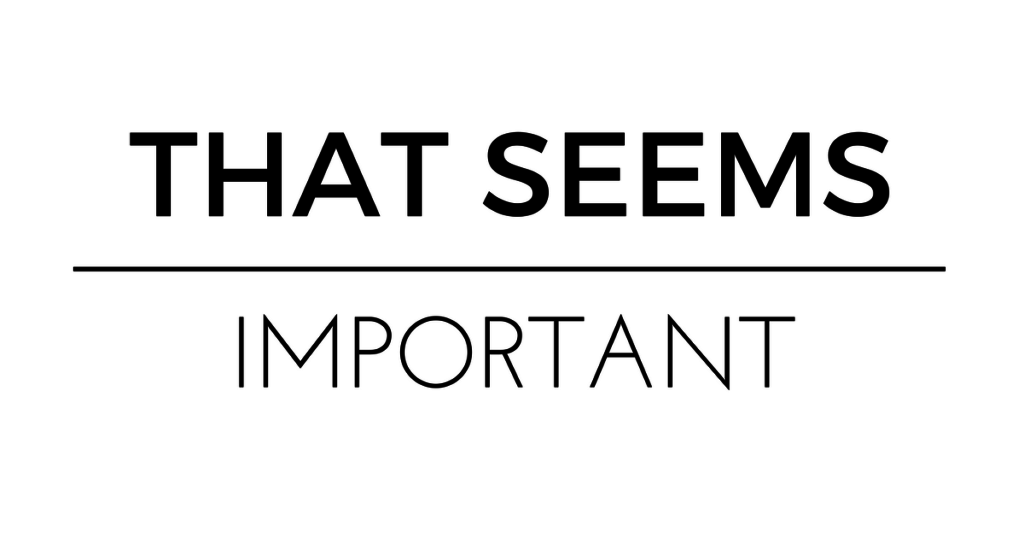Actionable tactics. That’s what they tell you. More tactics! Whenever I give a talk, the conference organizers are like the tactics police: ACTIONABLE. WE NEED ACTIONABLE STUFF HERE OK.
I love tactics too. I don’t want to go learn about SEO and someone gives me a shpiel on how I need to trust myself and my brand, I want to hear about HTags and Backlinks and if all successful companies are *actually* deploying black hat stuff. I WANT THE DIRTY DEETS ON THE TACTICS.
I could google it, but I’m not going to google it. I’m lazy and busy and so are you.
Without tactics, speakers always feel like a tiny bit of a letdown. Like yeah, that’s all good and fine, but tell me the real stuff. You use a growth hacker? Dev guy? How’d that piece *actually* go viral? Like for real? Bot traffic? TELL ME.
But here’s the problem with that stuff: It doesn’t actually matter.
Unlike biology where you legit need to know things you can’t figure out on your own, marketing is intuitive. Or it should be because you’re dealing with people. Human beings. And the good thing about humans is we work in patterns. Your job is to pay attention to the people. And find the patterns.
I get asked all the time about why I do or don’t capitalize subject lines, what time of day is best for email, whether you should write, “Hi Friend!” or “Hello,” how long your content should be, why I used ALL CAPS on a button, how many seconds I wait until the pop up goes up. Which is why I started taking that stuff out of my talks.
Yes, out. It’s interesting to learn about the 9-word email or advanced tags and segmentation or the one-two punch approach (when you’re sending a sales email, re-email only the people who opened the email later that day. Your sales will go up, don’t bother with the people who didn’t open. They’re busy).
But none of those things are going to help you if you’re not paying attention to the people. Which you’re not if you’re asking questions about colors and fonts and TACTICS.
If you’re trying to optimize your website for conversions and you have no idea what your readers care about you’re never going to succeed. There’s no magical formula for optimal number of pop-up seconds, exit-intent behaviors, footer copy, and color schemes that’s going to save you from not knowing your people.
(There are magical formulas that SaaS companies have but they still don’t matter if you don’t put the right copy on there and that requires (say it with me now) KNOWING YOUR PEOPLE).
There is a human being on the other side of the computer. There is no market. There’s a person. With a husband and a dog and a mortgage and a bad hair day and she really just wants to know when she can have her lunch break because these fluorescent lights are killing her.
You know how human beings work because you are a human being.
And we all care about the same stuff. We want to feel seen and understood, we want to belong, we don’t want to do that much work, we’re lazy (cognitively), we care a lot about the opinions of others, and we want to know – all the time – if other people have done it first and what do they think of it.
The good news about persuasion and influence is that if you’re paying attention you can come to all these conclusions yourself. You can (and probably should) read up on the concepts, but it’s ok if you don’t. Like I said, this isn’t biology or chemistry. It’s people. And you (should) know people.
Your favorite companies are doing this. I’ve been behind the scenes of many of them and they all have the same traits: They have no brand voice guide, no templates or frameworks. What they have is a culture where they trust their employees to figure shit out. They’re allowed to play.
I swear to you, I wish I was making this up because it made me pull my hair out when I first noticed it. But the companies that were suffering were always always always the ones trying to fit a mold for how they thought they were “supposed” to do this. The successful ones would borrow from different frameworks and were well-read on stuff, absolutely. But when it came to executing they were basically like, “What if we tried this? That’d be cool right?” And then tried it. They played. They tried stuff that might not work. They weren’t afraid.
And that’s what’s missing from these talks. Y’all are afraid. SO AFRAID. Afraid of your boss, afraid of losing money, afraid of doing it “wrong.”
But let me remind you this is marketing and entrepreneurship. This isn’t brain surgery. Let the surgeons worry about fear. The biggest mistake you make will harm your ego, no one’s life is in danger.
We have to stop being so scared of messing up.
- Post whatever you want on social media. PLAY WITH IT.
- Write emails in whatever style you want. PLAY WITH IT.
- Create ads that say whatever you want. PLAY WITH IT.
And then pay attention to what happens.
If it doesn’t work, CHANGE THE STRATEGY. That’s the piece that’s missing here. We get angry when we deploy a best practice (or trust our gut) and it doesn’t work.
Of course it’s not going to work, you were just playing. Now play again. Play and play until something does work.
The marketing genius you’re looking for is not as sexy as you think. Clear trumps clever. Run the same ads repeatedly until they stop producing returns. If it ain’t broke don’t fix it. Talk to people like people. The end.
This doesn’t have to be complicated, in fact, it’s really not.
It’s just scary. Because of our bosses and our expectations for ourselves because it’s not complicated. And because it’s not complicated we think it should be easy. They’re not related. It’s hard. It’s hard to try things that don’t work, to come day after day after day trying to blend the art with the quant, trying to justify to your superior why creative collateral will work for long-tail stuff she’s trying to accomplish but isn’t hitting the sales goals. It’s hard.
It’s hard. Not complicated.
And that’s great news because you know how to handle hard. Same way you handle everything else. Bird by bird, buddy. Just take it bird by bird.




